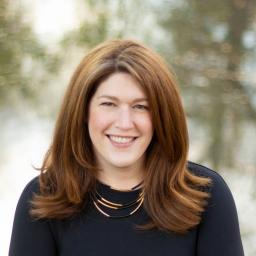Enrollment trends play a pivotal role in shaping the present and future of our schools. Over the last few years, Jewish day schools and yeshivas have experienced significant variations, in relation both to each other and to past performance. Some schools and communities have seen sharp rises, while others have decreased or remain flat. Fluctuations are influenced by factors such as shifting demographics, economic conditions, the aftershocks of Covid or the most recent war in Israel. Given the impact of extreme circumstances, It can be challenging to look at your school’s enrollment data from the last few years and pull the threads to reveal trends or patterns. However, with strong professional practices, we can identify trends that can support your efforts to drive enrollment at your school.
It happens every year and we have come to expect it: the late season application wave. It may start before Pesach break or right after, but once it starts, it will likely last until the day before school starts in the fall. It may have looked different during and after Covid, and it may look different this spring since the start of the war in Israel, however, it continues to be an enrollment trend that many schools see each spring. Prizmah’s recently published Enrollment Trend Report representing 110 schools across North America, shows increased inquiries from public and private school students interested in mid-year transfers into Jewish day schools and yeshivas. This enrollment trend is one that we will continue to follow.
This late season application wave has its challenges; juggling decision notifications for earlier applicants at the same time as managing an influx of late season inquiries and applications can be stressful. Yet it can also be an opportunity to increase your school’s enrollment and build transition programming for students to smoothly enter into our schools from other public or private schools. Many schools may have space in certain grades that they need to fill, and it can be exciting to get more applicants. This is a trend that has increasingly been gaining attention the last few months. As we closely monitor the trend we hope that it will have a positive impact not only on enrollment but more importantly, on how schools weave it into their unique story. No matter where you are, this is a trend you should be ready for should the wave hit your school.
Around the same time as the late application wave is beginning, many schools are engaged in processing re-enrollment for their current families. Over the last 10 years, we have seen more Jewish day schools and yeshivas move from traditional reenrollment, where a contract (either digital or paper) is sent to families each year, to continuous enrollment, where students are automatically re-enrolled unless parents opt out.
This approach is leading schools to focus on fostering positive and meaningful interactions among educators, administrators, and parents. A significant change is in the communication strategy and personalization for parents. Schools are tailoring their communication and engagement strategies to meet the individual needs and preferences of parents. Utilizing technology, schools are creating more streamlined and transparent communication channels to keep parents well-informed about their child’s progress, upcoming events, and school initiatives. In addition to traditional parent-teacher conferences, there is a heightened emphasis on expanding face-to-face interactions and holding them at key points during the school year—around the holidays, before winter break, before reenrollment and late spring. This initiative includes organizing parent education workshops and increasing family-based school events, all geared towards ongoing community building and collaboration.
In essence, the shift towards a thoughtful customer service and intentional parent experience reflects a commitment to building strong partnerships between schools and parents. This collaborative approach contributes to a positive school culture, strengthens retention, and enhances the overall educational experience, creating a more supportive and enriching learning environment and community.
Prizmah’s vision for enrollment extends beyond mere numbers. It’s about building a robust foundation that propels schools toward sustained success and growth, working with schools’ leadership teams, creating meaningful and strategic partnerships in their community, ensuring a thriving future for Jewish day schools and yeshivas.
Traditional reenrollment often necessitates hundreds of hours of effort in processing contracts and tracking down families to return them, all in service of a clear picture of enrollment numbers to share with your head of school and board. By contrast, continuous enrollment brings with it many advantages. Overall, schools have seen improved retention rates and parent satisfaction with a simplified process. Success stories from schools that have embraced continuous enrollment serve as inspiration, guiding other schools towards a more sustainable and strategic approach.
Identifying and understanding enrollment trends and building a plan to leverage them is crucial for the continued success and enrollment growth. We invite you to engage in further discussion on enrollment trends in our Admission Reshet, share your experiences and the trends you are seeing in your area, and contribute to the collective wisdom of our community.




